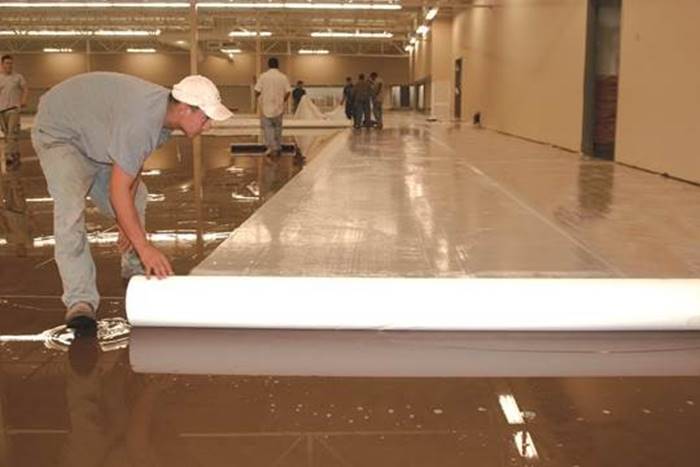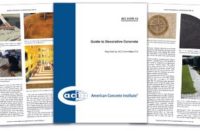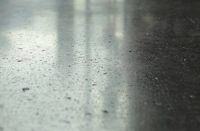
Photo from Concrete Decor archives
The definition of curing is providing adequate moisture, temperature and time to allow cement to hydrate and concrete to develop internal strength and abrasion resistance. There are a number of methods for curing concrete. We have compiled them here in one place.
Here are the methods for curing concrete
Wet cure. Consisting of a uniform puddle on the entire surface, this method is difficult to maintain. It requires someone to man the slab 24 hours a day, with no construction possible.
Chemical cure (ASTM C-309). The chemical dries and lies on the surface, creating a film that eventually becomes brittle and breaks off. The problem with this method is that unless it’s in the presence of UV or enough traffic, the film won’t break off on its own. This means the first diamonds used must remove it before you can start grinding uniformly.
Chemical cure-and-seal (ASTM C 1315). This product penetrates and leaves a film on the surface. It’s designed to be a sealer once the concrete is cured. The only situation where I think this should be used involves schools with block walls. (If you’re bidding on this type of project, give me a call. I can help.)
Wet blanket cure. There are three basic types:
- Visqueen (polyethylene sheeting). This product is thin, not very durable and comes in rolls. It’s very hard to control and lay flat and likely won’t stay down on its own. It leaves uneven looking concrete.
- Reusable blankets. These synthetic-fiber blankets are time-consuming to lay out and labor intensive since they’re heavy and must be unfolded and then repositioned. They also are contaminated from the previous job and are less likely to stay put in anything less than ideal conditions.
- Single-use wet blankets. These roll out parallel to the slab edge. You must monitor the water absorption and add water under the blanket if needed. These blankets act similar to a baby diaper. They hold moisture at the surface which allows the concrete to remain hydrated. Rollers easily eliminate wrinkles. The blankets don’t need to be either taped or weighted to remain in place. Repeat applying until the entire concrete surface is covered. (Note: Use burlap for exterior concrete only.)
Here’s the tip
The preferred way to cure polished concrete is the single-use wet blanket cure. When you finish concrete and cut the joints, cover the entire slab with a thin puddle of water and follow it by a single-use wet curing blanket.
The goal is to have the blanket in contact with the water. There should also be enough water on the surface that the blanket doesn’t stick/dry to the slab. This is easier than it sounds.
When done right, you produce a concrete slab that has the following characteristics:
- Cleaner surface, since there will be little to no laitance powder on the surface.
- No differential cure. As a result. it will be more uniform in color with a uniformly darker, richer appearance.
This is especially important when polishing since it the finished product!













